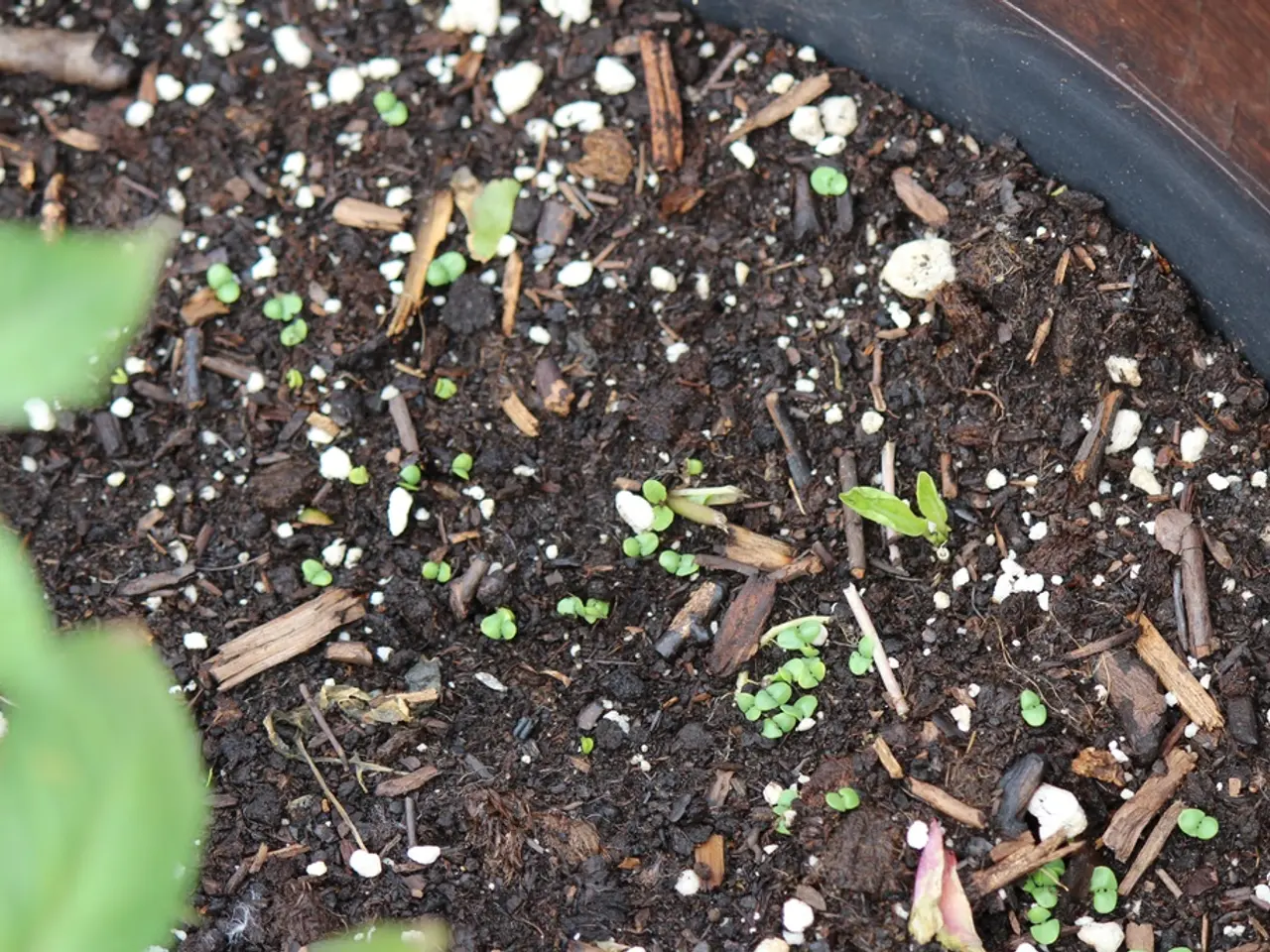Revising Soil for Reuse: Proven Strategies for a Thriving Reboot of Plants
Improving the health of your garden soil is essential for promoting healthy plant growth. Here are some practical tips to enhance your soil's structure, texture, and nutrient content.
Enhancing Soil Structure
Incorporating organic matter into the soil can significantly improve its structure and create air pockets that support root growth and water absorption. Organic materials such as compost, worm castings, peat moss, or aged animal manure can be used. However, ensure that grass clippings are seed-free and haven't been treated with pesticides or herbicides before adding them to your garden bed.
Loosening the Soil
Loosening the soil in your garden can promote healthy root growth and give your plants the best chance to thrive. Tools such as a spade, digging fork, or a broad fork can help break up compacted soil and improve aeration.
Aerating the Soil
Liquid aeration and core aeration can help break up compacted soil. For potted plants, using chopsticks or a similar tool to gently poke and wiggle air pockets into the soil without damaging the roots can improve water penetration and enhance root growth.
Adding Nutrients
Adding compost, aged manure, coconut coir, plant material, leaf mould, chicken manure, perlite, potting soil, worm castings, grass clippings, and peat moss can improve soil texture and provide essential nutrients. For specific nutrient needs, consider products like Liposam®, Calciumsulfate, Vulcolit®, Vermiculite, and rock phosphate, bone meal, or bone char.
Addressing Nutrient Deficiencies
Mild, slow-release, organic fertilizers such as kelp meal, alfalfa meal, crab meal, and neem seed meal can help address nutrient deficiencies in soil.
Improving Soil Porosity
Suitable products to improve soil porosity include Liposam®, which connects primary soil particles into stable aggregates enhancing porosity, water retention, and air circulation, Calciumsulfate that flocculates clay components improving overall soil structure, Vulcolit® as a mineral additive that increases water storage and stabilizes soil texture without environmental drawbacks, and Vermiculite, an expanded mineral that promotes drainage and moisture retention in soil.
Utilizing Cover Crops
Cover crops, also known as green manure, are grown on unused soil with the intention of tilling them in and letting them decompose. Roots of cover crops help keep the soil loose, and the plants suppress weeds. Cover crops from the legume family, such as clover and vetch, also add nitrogen to the soil.
Following Recommendations
When adding nutrients to the soil, it's important to follow the recommendations from a soil test. Too much of a good thing can be harmful, so only add what your plants need. It's also important to space out your nutrient additions.
By implementing these practices, you can create a thriving garden ecosystem that supports healthy plant growth and promotes biodiversity. Happy gardening!
Read also:
- Peptide YY (PYY): Exploring its Role in Appetite Suppression, Intestinal Health, and Cognitive Links
- Toddler Health: Rotavirus Signs, Origins, and Potential Complications
- Digestive issues and heart discomfort: Root causes and associated health conditions
- House Infernos: Deadly Hazards Surpassing the Flames








